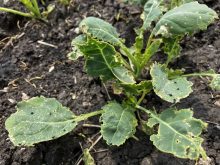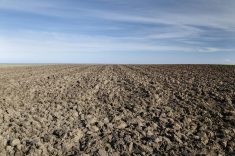It’s still a bit early to get into the field, but here are a few jobs you can do now to set yourself up for success this season.
- Get the drill ready. Check each opener, tire and hose. If you have a perfectly flat spot for levelling, that may also help achieve consistent seed and fertilizer depth. Read more.
- Watch the Canola Council’s “Canola Stand Establishment” video to refresh yourself with the best management practices, in a simple question-and-answer format involving other farmers who grow canola.
- Try the tools at canolacalculator.ca to find the target plant stand that fits your risk profile, then use seed weight to set an appropriate seeding rate. Stubble counts of last year’s crops cross-referenced with yield results and input costs for those fields may help determine the ideal stand for this year.
- Scout for winter annuals, perennials and canola volunteers. How will these influence your pre-burn decisions? Also look for patches of weeds that weren’t well controlled last year. How early is too early for weed spraying?
- Check out the residue situation. Have an idea whether you’ll be able to seed through it — especially in fields planned for canola. Alberta Agriculture has a new fact sheet with tips for fields that still have crop to harvest.
- Reassess clubroot. Muddy equipment and moving water after a wet fall had the potential to spread clubroot and for growers outside Alberta, the issue hasn’t been top of mind, even though it’s present in those provinces too at lower levels. Keeping the disease in mind now will help you detect the problem early and keep it under control.
- Manage ruts. Use shallow tillage to fill in ruts, keeping in mind that if compaction is the bigger target, compaction might not be as bad as you might think. Soil fully saturated with water is at lower risk for compaction. Action taken this spring to manage ruts might actually cause more compaction than last fall’s work in saturated soils.
- Consider check strips. Start with a question you want answered, such as: Will 50 per cent more nitrogen increase my canola yield and profitability? Use replicated strips. Take it to yield.
- Put together a scouting tool kit. With good snips, sweep net, plant-count hoop and more in hand now, you’re ready for a good year of stand and pest assessments and the improved decision-making these provide. Read more.
- Test soils. With the late harvest, growers may have run out of time for a fall soil test. Wet conditions in some fields over the past few weeks and months may have also changed the soil nutrient levels for mobile nutrients such as nitrogen and sulphur.
Read Also

CUSMA access key among other trade noise: Seeds Canada panel
Seeds Canada conference panelists say Canada needs to stay focused and wait as U.S. trade and tariff chaos develops, and a Canada-U.S.-Mexico Agreement review looms



















